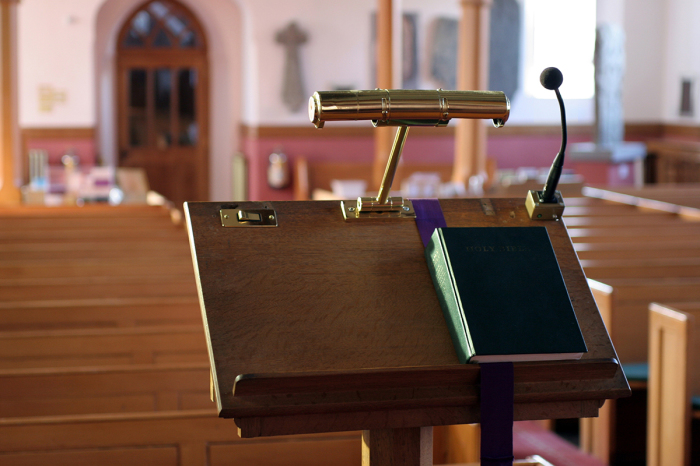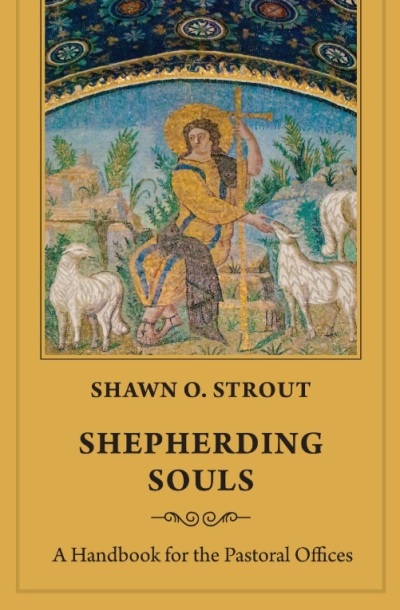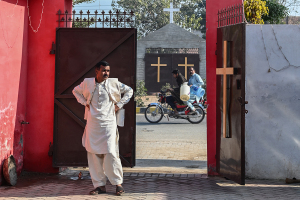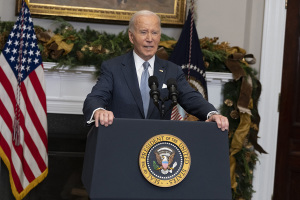Seminary prof. aids church leaders with pastoral obligations like baptisms and weddings

A seminary professor and Episcopal priest has written a book to help clergy and lay leaders navigate pastoral obligations such as baptism and marriage.
The Rev. Shawn Strout, assistant professor of Worship and associate dean of Chapel at Virginia Theological Seminary in Alexandria, Virginia, authored Shepherding Souls: A Handbook for the Pastoral Offices earlier this year.
He told The Christian Post his "primary reason for writing this book was to be a consolidated resource for pastors to guide people through the pastoral offices."

"As a professor of worship at the Virginia Theological Seminary, I realized that one would need a whole shelf of books to address these critical moments in people's lives," said Strout.
"My book offers a brief historical overview, theological insights, cultural connections, and pastoral perspectives in one handbook. It also provides additional resources for pastors who want to explore those areas more deeply."
Strout noted that his book also "looks at the pastoral offices ecumenically and interculturally," noting that many books on pastoral office duties "tend to speak within a particular church tradition."
"However, the pastoral offices often bring people from different church traditions together. Therefore, an ecumenical perspective is paramount," he continued.
"Also, these offices involve deep cultural connections. While the book is clear that the examples provided should not be taken monolithically, they can help pastors see the cultural complexities involved in these offices."
Strout divides his book into five sections: "Baptism," "Confirmation and Other Rites of Affirmation," "Marriage," "Rites of Reconciliation and Healing" and "Ministration at the Time of Death and Burial."
In each chapter, Strout examines the history of the pastoral office, seeing how the early Church administered the specific sacrament or rite, and how it has changed over the past couple of millennia.
Strout said that while it is typical for a modern church to go back to Scripture and early Church practice to justify their tradition, practices found in Christian history regarding rites like baptism are quite diverse.
"Because Christians take Scripture seriously, we often want to find our contemporary experiences modeled in it. A strong tendency exists among many Christian traditions to attempt to trace their contemporary practices back to a scriptural pattern," Strout explained.
"However, modern historical research on the liturgy shows us that various worship practices existed in the New Testament period and after that. If we desire to find a sense of connection with the early Church, we will likely succeed as the early Church had various practices."
Strout warned against the "desire to justify our practices over and against those of other traditions," as the "early Church was as diverse in its practices as the Church today."
In the case of baptism, for example, Strout wrote that the Bible "does not give exact details of the elements involved in the baptismal rite" and "is also unclear about the role of infants in baptism."
Strout noted that while there was no "explicit reference" to infant baptism in the Bible, passages like Acts 16:15 document "entire households" being baptized and thus imply infants, as well.
After going through the history of each pastoral office, Strout examines the modern pastoral perspectives and applications, providing the reader with advice and resources on each topic.
While churches throughout history often had diverse practices regarding various rites and sacraments, Strout believes there were still limits to where certain practices could be taken.
For example, in the chapter on marriage, Strout analyzed the issue of cultural traditions and whether they can be part of a Christian wedding ceremony. One such example was the desire of some couples to include a "unity candle" as part of their ceremony.
"While it can take many forms, essentially, it is two candles, one held by each person to be married, that they then use to light another candle. The idea is that two people become one in marriage," Strout told CP.
"However, some pastors have come to question this symbol. Where does God fit into the picture? What about the families? How does the congregation who is witnessing and promising to support the marriage symbolized in it? Is this symbol too focused on the couple, leaving out even Christ's presence in the marriage?"
Strout emphasized that "just as historical research has shown us that varied worship practices existed from the Church's earliest days, it has also shown us that worship practices have evolved."
"All the worship rites used today, created by the pastor for the occasion or having a historical legacy, are the product of theological, cultural, social and political developments throughout history," he said to CP.
"Wise pastors will appreciate this 'living tradition' by neither jettisoning it altogether nor adhering to it rigidly. Instead, they will glean it for the wisdom it provides to minister to the people left in their care."





























